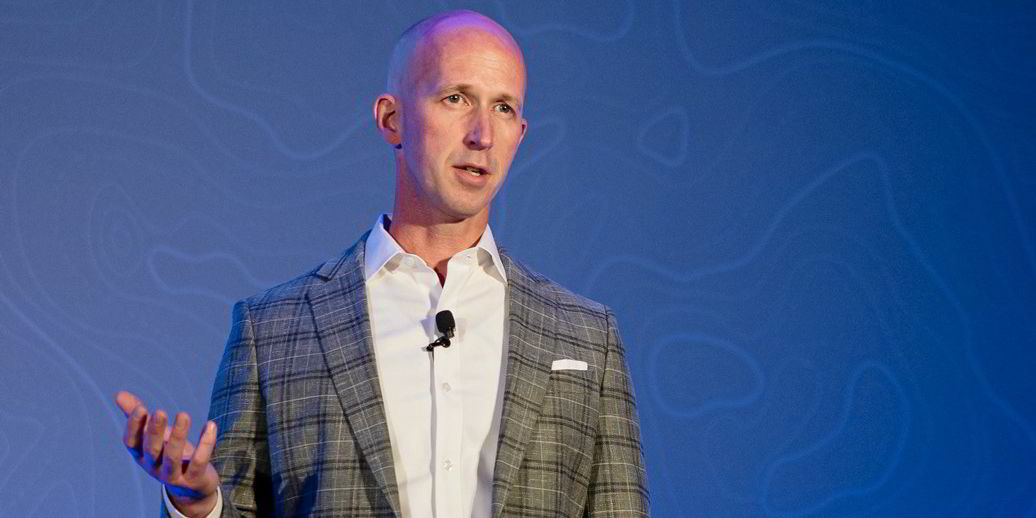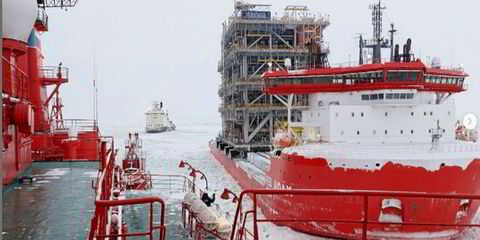Veson Nautical has made its second acquisition of 2023, buying UK data platform Shipfix.
The deal by the Boston software-as-a-service firm, whose flagship platform is a key workspace for much of the bulk shipping world, is its fourth in three years, following takeovers of VesselsValue, Q88 and Oceanbolt.
As with those targets, executives touted the latest deal for bringing a wealth of data available to users of Veson Nautical’s software platform.
Veson Nautical president Sean Riley told TradeWinds that a key feature is Shipfix’s pre-fixture data on the process leading up to cargo loading.
“Pre-fixture data is often very unstructured,” he said. “And so this gives us … an ability to put some more structure around the unstructured data that comes through in the pre-fixture space and allow people to access it and utilise it in a way that’s a little bit easier.”
Bringing Shipfix’s technology into Veson Nautical also bolsters collaboration.
The Boston company is best known for its integrated maritime operations system Veson IMOS Platform, which allows shipowners, charterers, traders and other players to manage voyages, and it has made significant headway in its goal of making it a standard platform across dry and wet bulk shipping.
But in the summer, it unveiled a new product on the platform called Connect that is focused on collaboration. Some users were brought into the system ahead of its official launch.
1979: Michael Veson founds Veson Inc and introduces automated port-to-port distance tables.
2003: His son John co-founds Veson Nautical with Eva Douzinas and acquires Veson Inc assets. John Veson remains Veson Nautical’s chief executive.
2021: Veson Nautical acquires Oceanbolt, a maritime data intelligence platform for bulk commodities.
2022: The company buys Q88, a vessel documentation platform.
2023: Veson acquires VesselsValue, a ship valuation and data firm, and Shipfix
“We think, through this standardisation, we actually can create a landscape where it’s easy for everyone within the ecosystem to collaborate, but it also opens up for other companies that are providing value-added services to expose those services in a much easier way,” chief executive John Veson said.
He said his company has been hearing from clients that, amid growing digital innovation in shipping, they are forced to jump between different screens on their computers to make use of those new tools.
“With the Connect platform, that’s something that just comes together but also allows our partnerships to plug into that and create sort of that unified view for our clients,” the Veson Nautical co-founder told TradeWinds.
Launched in 2018 by co-founders Serge Alleyne and Antoine Grisay, Shipfix has grown far beyond its initial mission to tackle the overloaded inboxes of bulker and tanker chartering desks.
Its technology uses artificial intelligence to harness data to provide decision-making tools such as live cargo, tonnage and fixture information, vessel and cargo tracking, and supply and demand analytics.
Chief executive Alleyne said the vision was always to become the “ultimate solution” for the maritime and trade community, with AI-powered products as a starting point.

“Today, as Shipfix joins forces with Veson Nautical, it presents a unique opportunity for us to truly become the premier maritime platform, integrating best-in-class maritime expertise, data insights and communication work flows from pre to post-fixtures,” he said.
“This union aims to maximise our clients’ efficiency and operations in ways never seen before. It’s the perfect match for us.”
The financial details of the transaction have not been disclosed.
Veson will be taking on the full Shipfix team of more than 50 people, which Riley described as another key positive.
Veson has carried out two M&A deals in a year at a time when it is seen as a potential consolidator in a fragmented maritime technology space. The inevitable question is, what next?
“We continue to look for unique assets in the market,” Riley said. “And unique comes in a few different ways. That can be unique data. That can be unique software work flows. It can be unique relationships in the market.”
But Veson pointed out that M&A is only part of the company’s growth story.
“We have a build-buy-partner lens, and so we are still investing a lot as Veson internally.” he said.
“Veson grew organically for over 14 years. We do a huge amount in R&D, and even Connect now has been over four-and-a-half years in development and [is] just starting to surface.
“We also very strongly believe in our partner community. We know that we can’t build everything, nor should we build everything, and there always needs to be room for innovation.”





